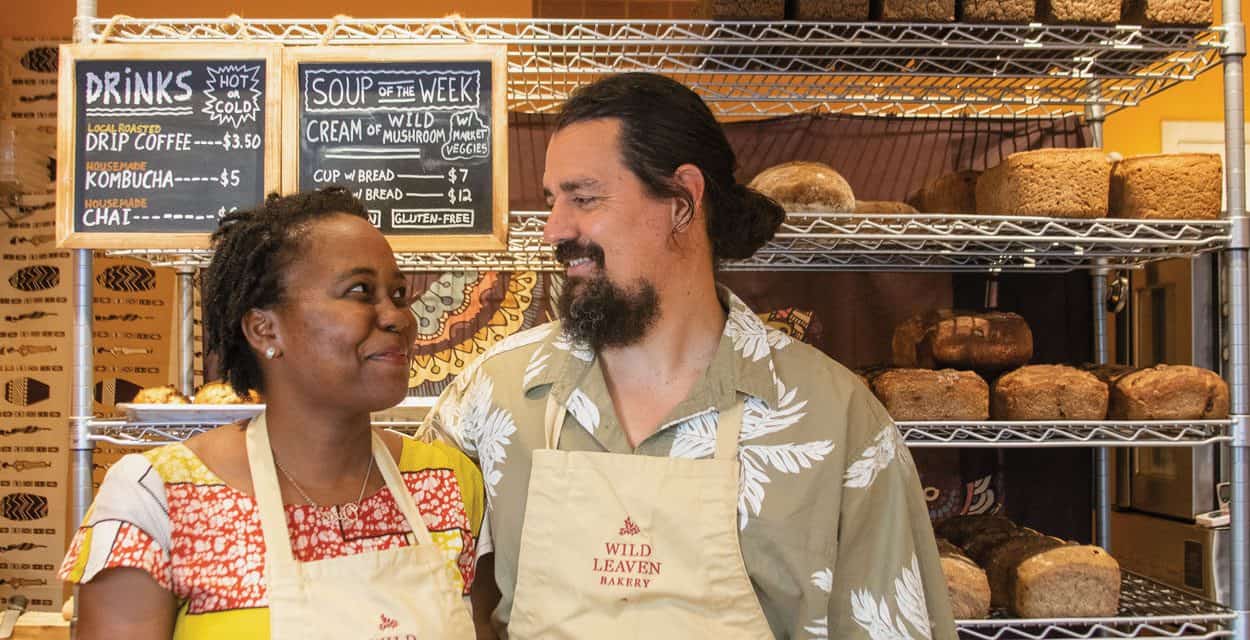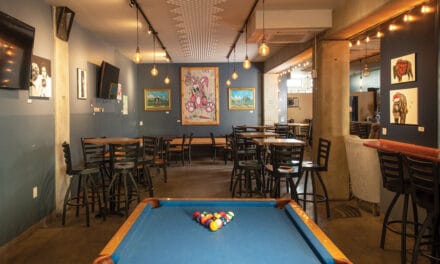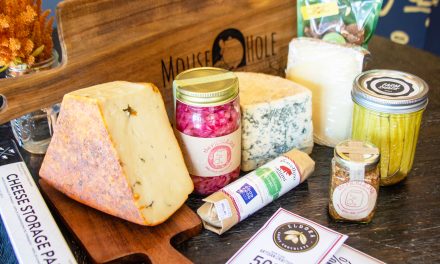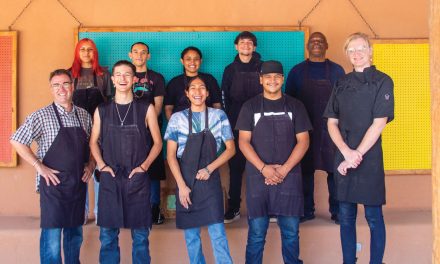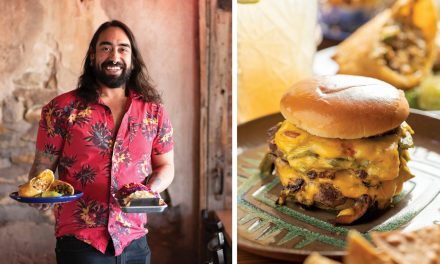Local Hero: Food Artisan
An Interview with Andre and Jessica Kempton, Co-Owners
Photos by Stephanie Cameron

Jessica and Andre Kempton at Wild Leaven Bakery in Santa Fe.
Wild Leaven Bakery is a small family business that began as a Taos Farmers Market vendor in 2012, then opened a retail location in Taos in 2016. In December 2021, owners Andre and Jessica Kempton opened their second location in downtown Santa Fe. Specializing in artisan sourdough bread, pastries, sweets, and soups, they proudly support local and organic farmers and producers from northern New Mexico and southern Colorado.
Your breads use locally grown and milled heirloom grains such as White Sonora wheat. Describe the process of working with farmers to aid the resurgence of this heirloom variety. What characteristics make this wheat unique to work with as bakers?
It has been super exciting to see the resurgence of ancient and heirloom grains in the last fifteen to twenty years. For the last ten years, the bakery has been buying seeds from respected regional millers and farmers and working with New Mexico farmers to grow a few varieties of heirloom and ancient grains so we can have a steady supply to bake with. We buy flours and grains from La Villita Farms, Mountain Mama Milling, and La Montañita Co-op, among others. White Sonora wheat, which we buy from Big Wheel Farm and New Green Organics, is very desired by bakers for its buttery, nutty, and sweet flavors, and we are now baking with it in many of our breads, pastries, and cookies.
In addition to using local grains that offer a unique terroir, your breads also incorporate local wild yeasts. Do these yeasts provide a special flavor, and, if so, how would you characterize that flavor?
Wild yeasts and bacterias are very exciting to work with. Each sourdough culture will have its own unique makeup of yeast and bacteria, giving its bread a subtle flavor of its own. Also, bakers are able to encourage and discourage the growth of different yeasts and bacteria to bring about desired flavor profiles in the final loaf of bread. For example, to achieve a super sour, tangy bread, you can ferment at higher temperatures for a longer period of time using a very wet sourdough starter. To achieve a less acidic, sweeter taste with Belgian beer notes in the loaf, a baker can use a stiff (drier) starter, fermenting at cooler temperatures for a long period of time. One of our all-time favorite breads is the Christmas Italian sourdough bread, panettone. With this bread, traditionally, one does not want any sourness to the loaf. Low acidity is achieved by encouraging yeast to dominate the culture, discouraging lactic and acetic acid bacteria from multiplying by building a stiff sourdough starter with added sugar or honey, all while fermenting for many days at a very cool temperature. The end product is light and fluffy with a bubbly crumb and a sweet flavor. The Italians have been making this sourdough enriched bread for hundreds of years.
In a profile we did on your bakery last year, you described the twenty-four-hour process of fermentation as “a dance.” We’re curious to hear more about what this dance looks like for you and how it has evolved.
We use an all-day and overnight fermentation process for our breads, which allows the microbes to break down the starches, proteins (including gluten), and sugars in the dough to produce a full-flavored, digestible bread. This process is like a dance because the bakers are constantly needing to adjust the starter amounts in the dough, and are controlling room temperature as much as possible to move with the constantly changing outside temperatures in the high desert.
In this scenario, it is essential to use a very small inoculation amount of sourdough culture in the dough to prevent over-fermentation. We also use a fridge to slow down fermentation in some of the doughs. We began using this overnight, room-temperature fermentation of large pan loaves after many years of trial and error and just experimenting with different methods. The results are a large, sliceable loaf with a uniform but bubbly, moist crumb. It has an excellent shelf life due to the acids and alcohol buildup from the yeast and bacteria being allowed to do their thing.

Top: Almond croissant. Bottom: Various pastries and cookies.
You opened a new shop in Santa Fe this past winter, and you recently made the decision to move away from selling to a handful of grocery stores to focus on in-store and farmers market sales only. How has this transition gone? Do you see expanding back to grocery sales at some point?
The opening of our Santa Fe shop is a mark of our growth and the continuous support from our valued customers. This year, we’ve made the decision to restructure our operations to have fewer moving parts and focus on direct sales with our customers.We’ve been pleased with the support we’ve received so far.
What’s your favorite way to eat a slice of sourdough?
Toast the slice of sourdough, then spread on good butter and house-made jam.
Is there a local food issue that is particularly important to you?
Yes, local food security is very important to us. To achieve this, we need to be able to feed ourselves as a community for many months, especially if our access to outside food is cut off. Local food security includes grain storage to feed the community and animals, seed saving for fruit and vegetable planting, animal breeding for community members to raise their own livestock, and connections of local producers with consumers.
Describe a perfect day off.
A perfect day off will be staying home all day, cooking our favorite meals together, gardening, taking care of our land and chickens, and going on a hike or walk together.
216 Paseo Del Pueblo Norte, Taos;
130 N Guadalupe, Santa Fe; wildleavenbakery.com

